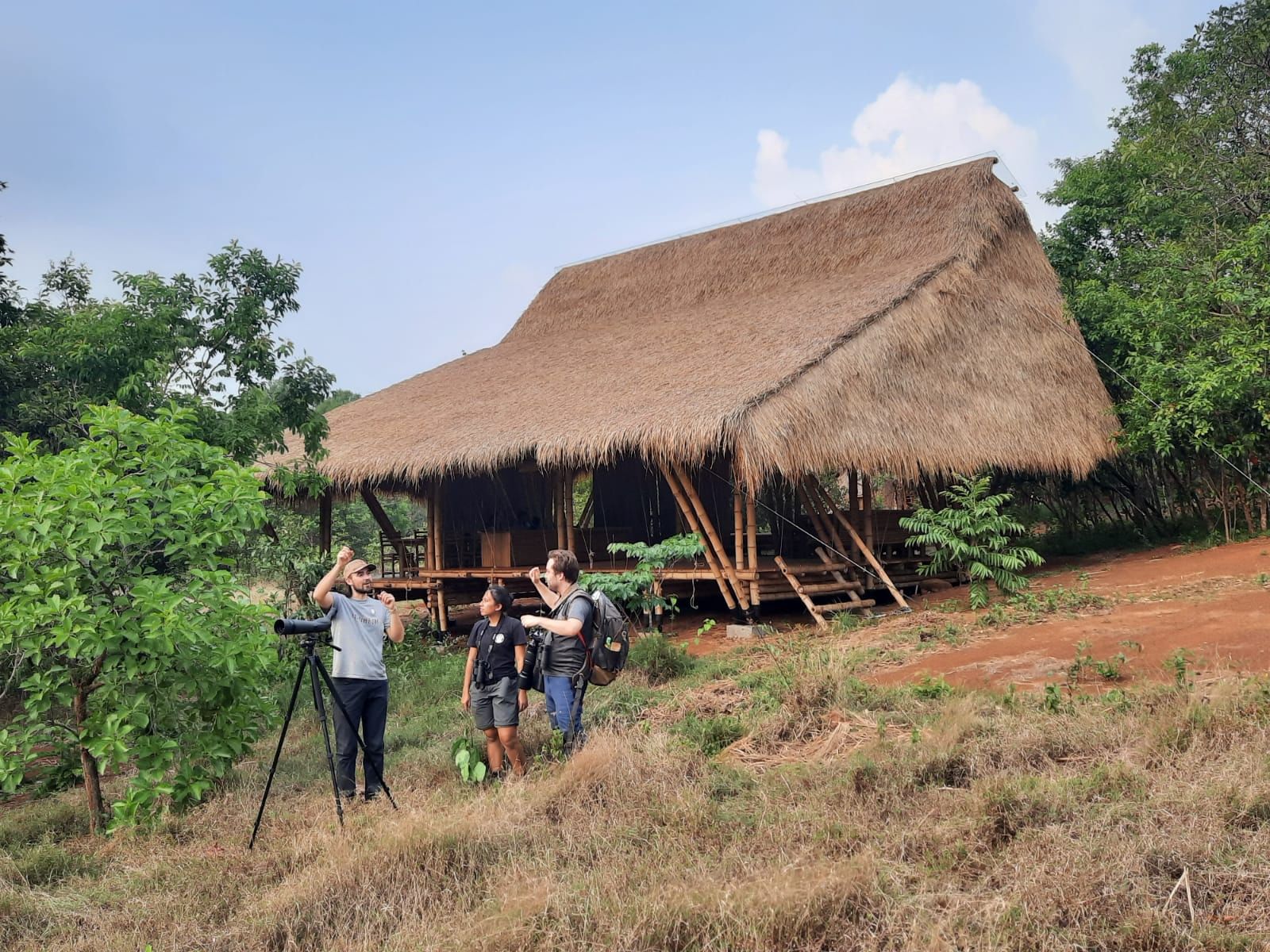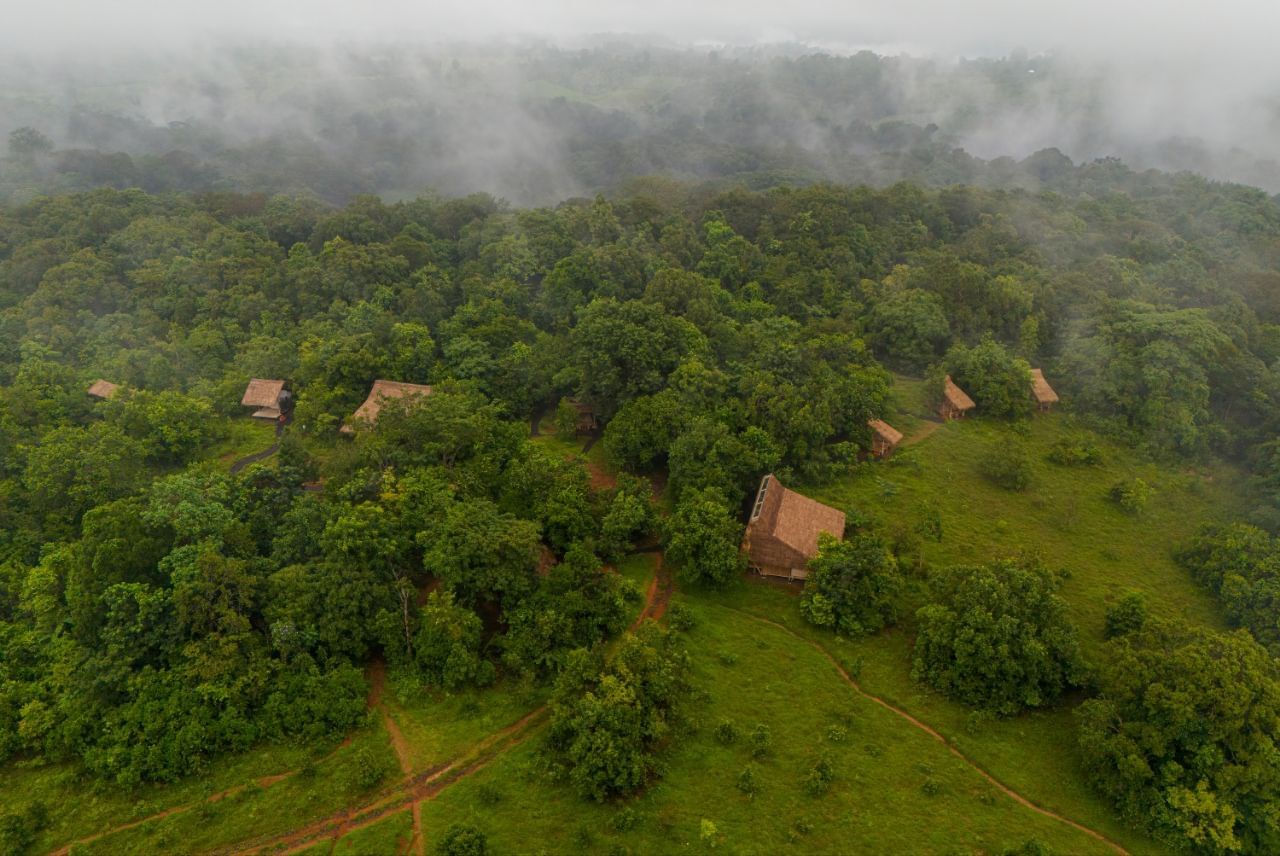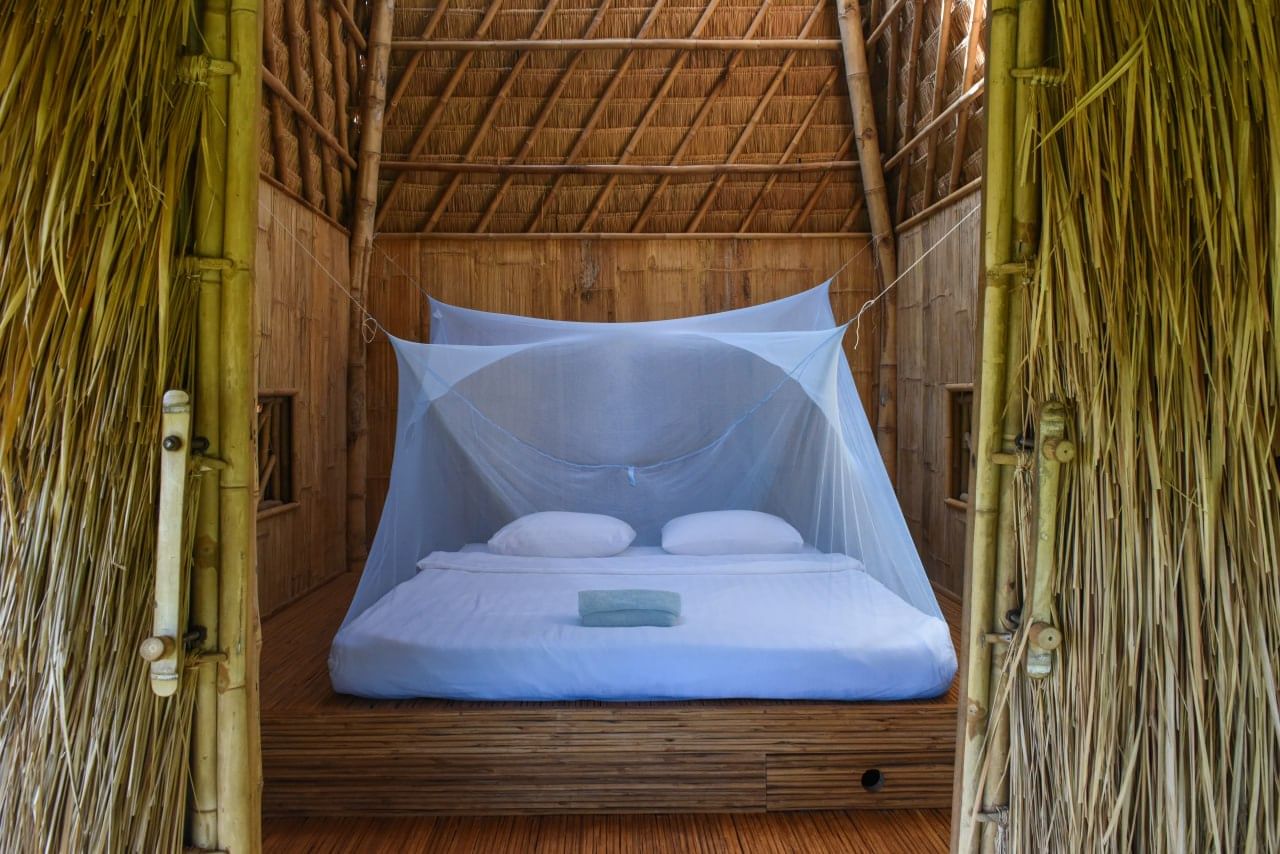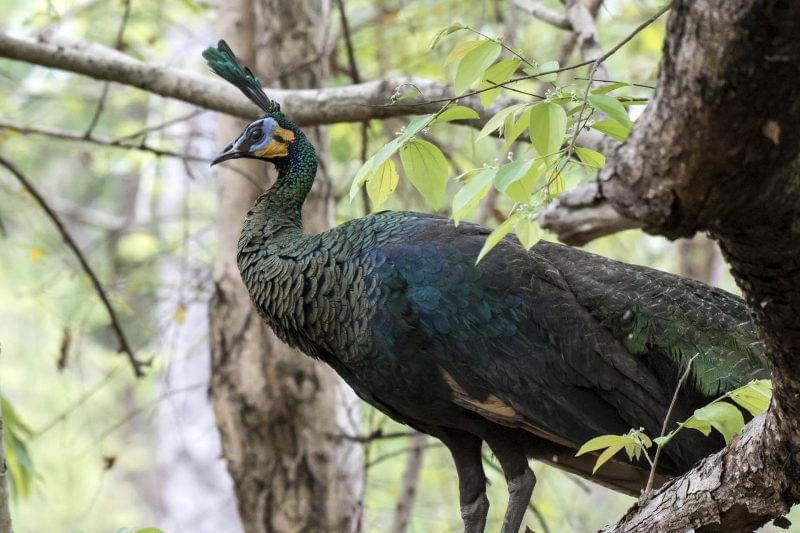Explore Jahoo
Experience the jungle at night in comfort at our iconic bamboo camp, search for nocturnal wildlife and wake up to the song of the gibbons
Tour Highlights
A relaxing start as our team pick you up after breakfast at your hotel and begin to embark on your journey out to Jahoo. Orientate yourselves first at our Bamboo camp and learn more about the research and community activities before
Spending the night deep in the heart of the Keo Seima Wildlife Sanctuary at the renowned Bamboo Camp offers a rare opportunity to experience the jungle after dark. As night falls, embark on an exhilarating adventure in search of elusive nocturnal creatures like the Pygmy Slow Loris and Small-toothed Palm Civet.
In the early hours of the morning, wake to the enchanting calls of the endangered Southern Yellow-cheeked Crested Gibbons, following their melodies through the misty forest at sunrise. Journey through the sanctuary with expert Bunong guides, who will reveal the hidden secrets of the forest, from rare primates like the Black-shanked Douc Langur to subtle traces of the elusive Sun Bear.
Immerse yourself in the indigenous culture as you learn traditional foraging techniques, listen to stories of the forest, and experience the deep connection between the Bunong people and their ancestral land. Trek past breathtaking landscapes of towering trees, bamboo groves, and cascading waterfalls, uncovering the untouched beauty of this extraordinary ecosystem.
Tour Packages:
Jahoo Community Tour: Experience Jahoo and Keo Seima Wildlife Sanctuary with local Bunong guides. Adventure into the forest spotting wildlife with the help of your local guides unique forest knowledge and skills.
Private Guided Tour - The ultimate wildlife experience: For those seeking an even deeper connection with the forest, a private guided tour ensures a fully personalized adventure. With a dedicated guide by your side, increase your chances of encountering rare species and gaining exclusive insights into the forest’s hidden wonders.
Key Species You May Encounter:
Mammals: Pig-tailed Macaque, Long-tailed Macaque, Southern Yellow-cheeked Crested Gibbon, Black-shanked Douc Langur, Pygmy Slow Loris, Lesser Mouse Deer, Black Giant Squirrel, Cambodian Striped Squirrel, Yellow-throated Marten, Small-toothed Palm Civit, Masked Palm Civit, Sunda Colugo, Leopard Cat, Red Giant Flying Squirrel, Clouded Monitor Lizard (Red Muntjak, Sun bear tracks can be seen)
Birds: Germain’s Peacock-pheasant, Siamese Fireback, Scaly-breasted Partridge, Orange-necked Partridge, Green Peafowl, Great Hornbill, Bar-bellied Pitta, Blue-rumped Pitta, Grey-faced Tit babbler, Grey-eyed Bulbul, Red-vented Barbet, Green-eared Barbet, Black and Buff Woodpecker, Pale-headed Woodpecker, Great Hornbill, Banded Kingfisher, Indochinese Barbet, Banded Broadbill, Dusky Broadbill
Habitat: Jahoo is an awe-inspiring landscape of towering semi-evergreen forest, interwoven with bamboo groves, winding rivers, and seasonal streams. Whether you’re a seasoned wildlife enthusiast or a nature-loving traveller, this multi-day jungle expedition promises an unparalleled adventure into Cambodia’s most bio diverse wilderness.
Book now and experience the magic of the Jahoo, day and night!






